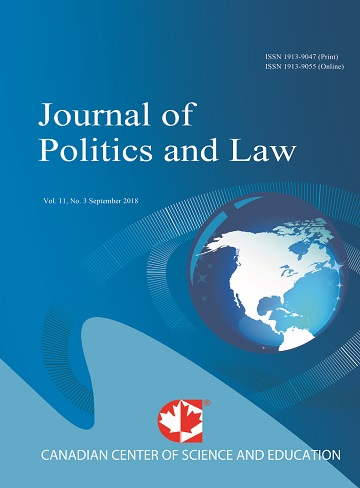China’s Opening-up Strategy in the Milieu of Belt and Road Initiative (BRI)
- Gao Wei
- Wang Lin
- Yan Jingdong
- Wu Yanxiong
Abstract
The Chinese economy is changing its development model from invest/export-led growth to consumption/growth driven by domestic demand. In the recent domestic-oriented growth phases of China's opening-up policy, what role is expected to play? Not only is this a way to acquire foreign exchange and technology, but it is also an economic powerhouse for China that strengthens its position in global governance. General Secretary Xi Jinping's proposed the "Belt and Road" initiative in 2013, which is considered an excellent strategy for China's new round of opening-up policy. This research paper aims to bring the BRI inside China's open-up policy and focuses on its increasingly important role in controlling major global economic regimes. The study also shows the importance of establishing systems of mutual aid/funding for the countries participating in BRI. The first section of the paper looks at China's reactions to major economic regimes. Section two reflects the design and the implementation of the opening-up strategy for China from the BRI perspective. Section three of the research addresses Chinese development aid/funding in the BRI and its relation to foreign regimes. The fourth part addresses the BRI's trade relationship with the participating countries, using the gravity model from a global commercial perspective. The study concluded that cross-border financial cooperation between government and business participants is vital for the development of a successful investment and funding system for the BRI. It reiterated the importance of using foreign and regional financial centers to develop a regional structure within the BRI's investment and financing system.
- Full Text:
 PDF
PDF
- DOI:10.5539/jpl.v14n3p6
Journal Metrics
h-index (2017): 14
i10-index (2017): 39
h5-index (2017): 9
h5-median (2017): 11
Index
- Academic Journals Database
- ACNP
- ANVUR (Italian National Agency for the Evaluation of Universities and Research Institutes)
- Berkeley Library
- CNKI Scholar
- COPAC
- CrossRef
- DTU Library
- EBSCOhost
- Elektronische Zeitschriftenbibliothek (EZB)
- EuroPub Database
- Excellence in Research for Australia (ERA)
- Genamics JournalSeek
- GETIT@YALE (Yale University Library)
- Ghent University Library
- Google Scholar
- Harvard Library
- HeinOnline
- INDEX ISLAMICUS
- Infotrieve
- Jisc Library Hub Discover
- JournalGuide
- JournalTOCs
- LOCKSS
- MIAR
- Mir@bel
- NewJour
- Norwegian Centre for Research Data (NSD)
- Open J-Gate
- PKP Open Archives Harvester
- Publons
- Pubmed journal list
- RePEc
- ROAD
- Scilit
- SHERPA/RoMEO
- Standard Periodical Directory
- Stanford Libraries
- UCR Library
- Ulrich's
- UniCat
- Universe Digital Library
- UoS Library
- WorldCat
- Zeitschriften Daten Bank (ZDB)
Contact
- William TaiEditorial Assistant
- jpl@ccsenet.org
